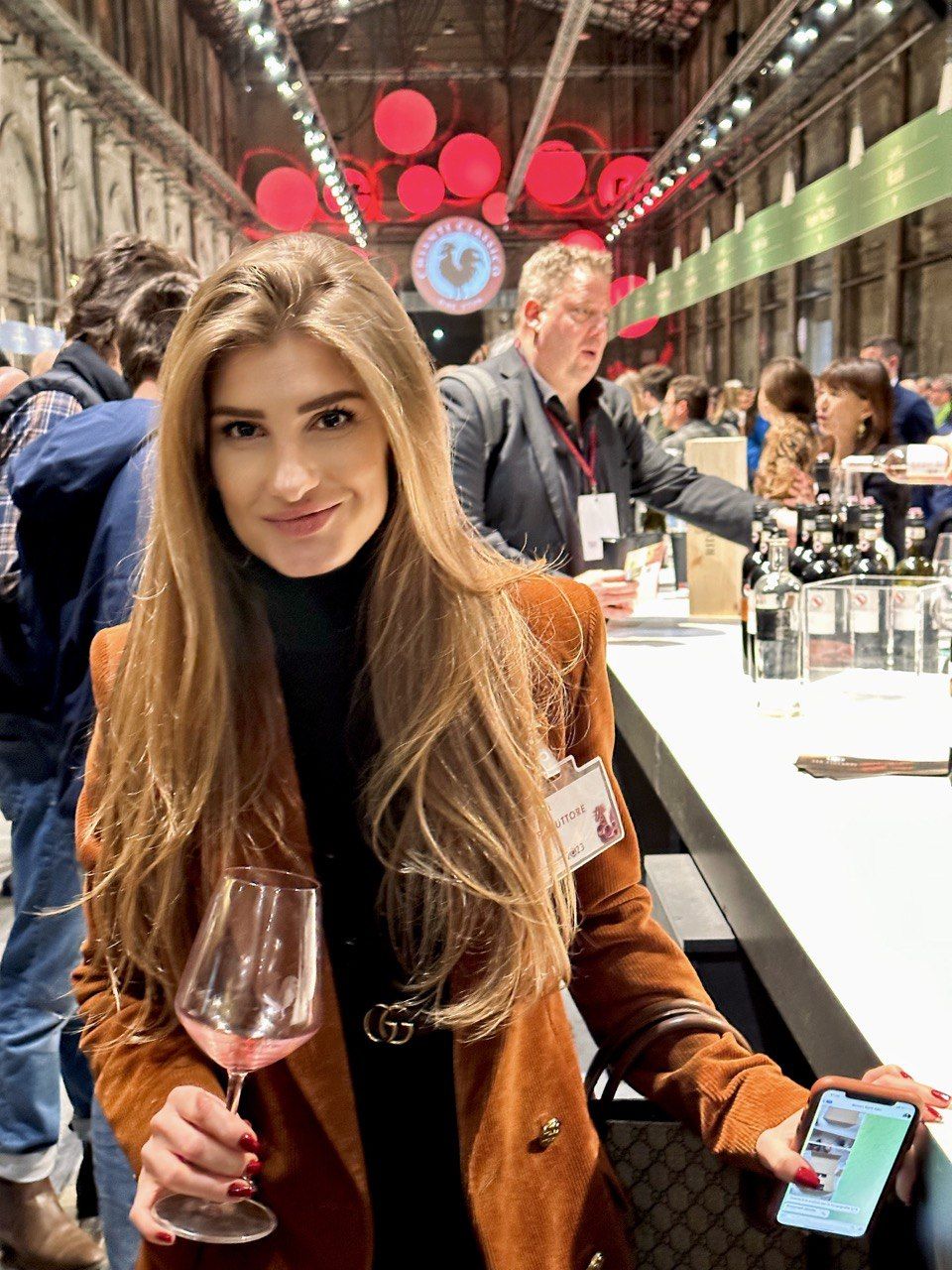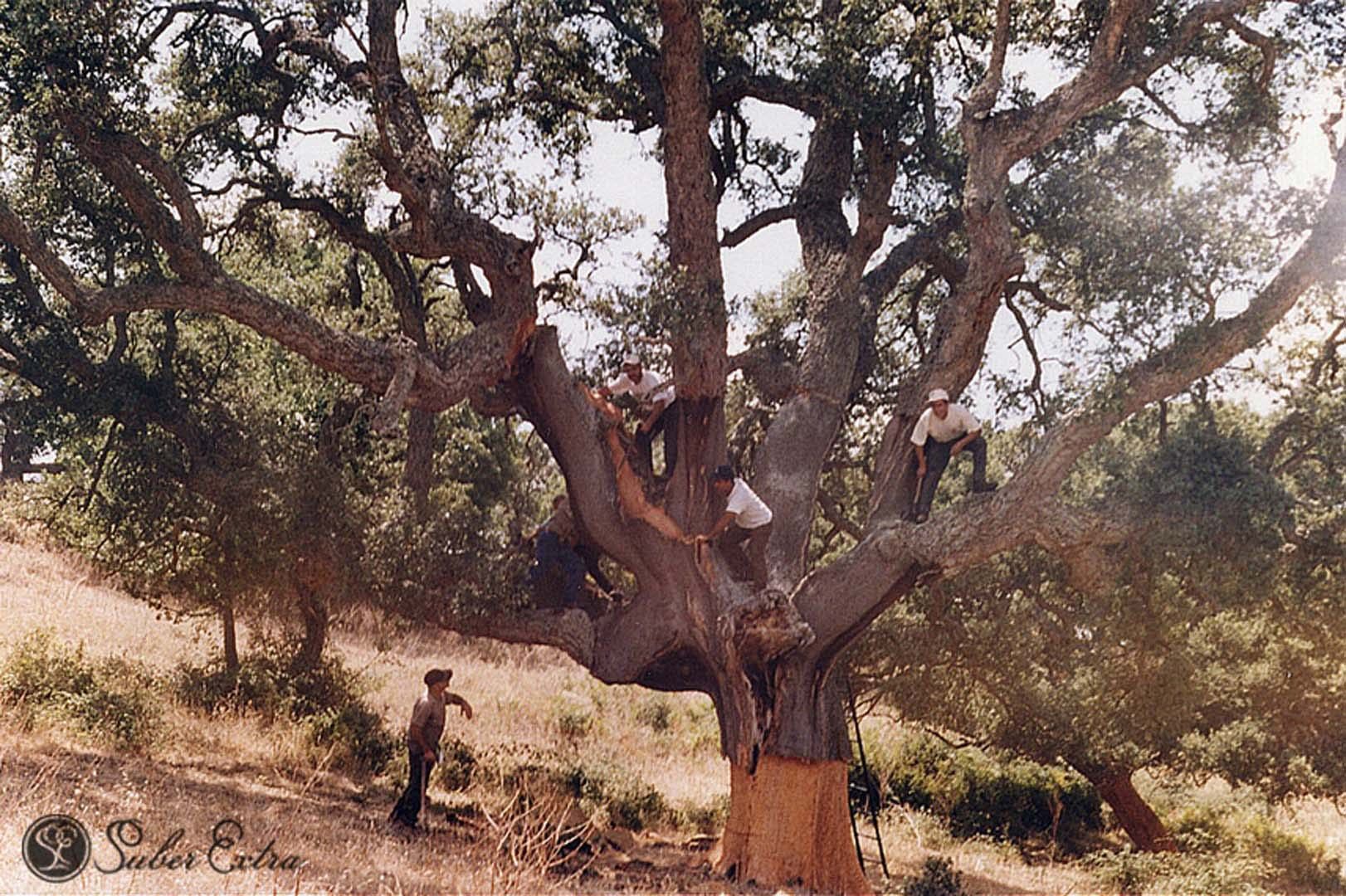
How are artisanal wine corks made? Inside a cork factory in Sardinia
What is the first thing you do when you want to drink a glass of wine? Of course opening the bottle. Have you ever wondered what is behind the cork that closes it? An entire world. First of all, the age-old diatribe between those who consider alternative closures to cork and those who instead remain faithful to tradition and the romantic cork closure.
As you know I am not a wine technician, but I am an incurable curious and a journalist. So I went to see with my own eyes how an artisanal cork stopper is produced in Sardinia, in the heart of Barbagia. I made a short video report that you can find at the link below. I learned a lot about Sardinian cork interviewing Franco Moro and his son Pietro at the helm of the company Suber Extra, I summarize some facts and curiosities in this article.
One of the positive feelings I took home from the visit was witnessing a virtuous local economy: the Moro family extracts cork from the centuries-old plants of Barbagia, selects it, processes it on site (in Ovodda, Nuoro), produces quality corks employing many families, with the scraps of the processing (the shavings and sawdust) feeds the entire company with alternative energies (including the solar panels installed on the plant) and ships the corks to many Italian wineries, but especially to the wineries of Barbagia, including the great producers of Mamoiada, Orgosolo, Dorgali. How many wine-producing regions can boast of a zero-kilometre cork? I found this choice a further virtuous step towards the protection of our environment and towards the much talked about sustainability: Suber Extra is an example of environmental, social and economic sustainability.
But now let’s see how the natural cork stopper is created in a Sardinian artisan company.

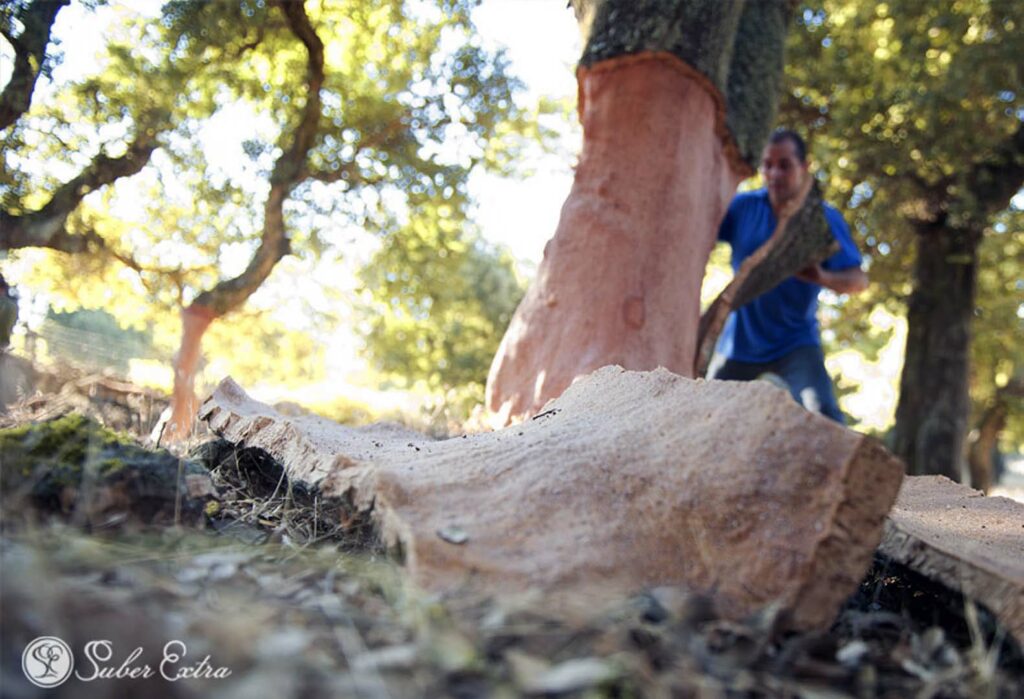
A premise: the main areas of spread of the cork oak (all located in the western Mediterranean Sea) are Portugal, Spain, Sardinia, Sicily, the Maremma of Grosseto, Corsica, southern France and North Africa. Currently, out of approximately 36,000 km² of cork forests in the Mediterranean, about 20,000 km² are economically exploited and about 300,000 tons of cork are extracted per year, of which about 15,000 in Italy (12,000 in Sardinia alone).
The extraction of cork requires careful preparation as well as great patience. In order to obtain an abundant production of good quality while respecting their health, in fact, the plants must have reached at least 10-12 years of age. If the flaying is done before time, the tree will deteriorate and its productivity will be irremediably compromised. It is important, therefore, that plants have reached the right level of development, and only then it is possible to proceed to the so called demaschiatura, that is the removal of the male cork, or sugherone, of poor quality, paying particular attention to cut only the tuberous part of the stem without causing injuries to the plant. After this operation the tree begins to produce the best cork (female or gentle) which becomes thicker and thicker and is ready for extraction only after, at least, nine more years. Once the removal has been done, it takes as many years because the plant is ready for a new extraction. It continues, therefore, with the same rhythms for the entire life cycle of the forest which can be up to 100 years. The extraction activity is always carried out during the summer season and involves, from time to time, a larger and larger area of the trunk until it reaches the branches.
The raw material thus obtained is, therefore, ready for processing and transformation into objects.
After a long process that starts from the seasoning, to make the bark lose its curvature, to the boiling, which completes the flattening and softens it, about 60% of the cork is destined to the manufacture of cork stoppers, about 15 billion pieces per year in Sardinia, of which more or less half in fine one-piece cork for quality wines and the other half in agglomerates for medium quality wines.
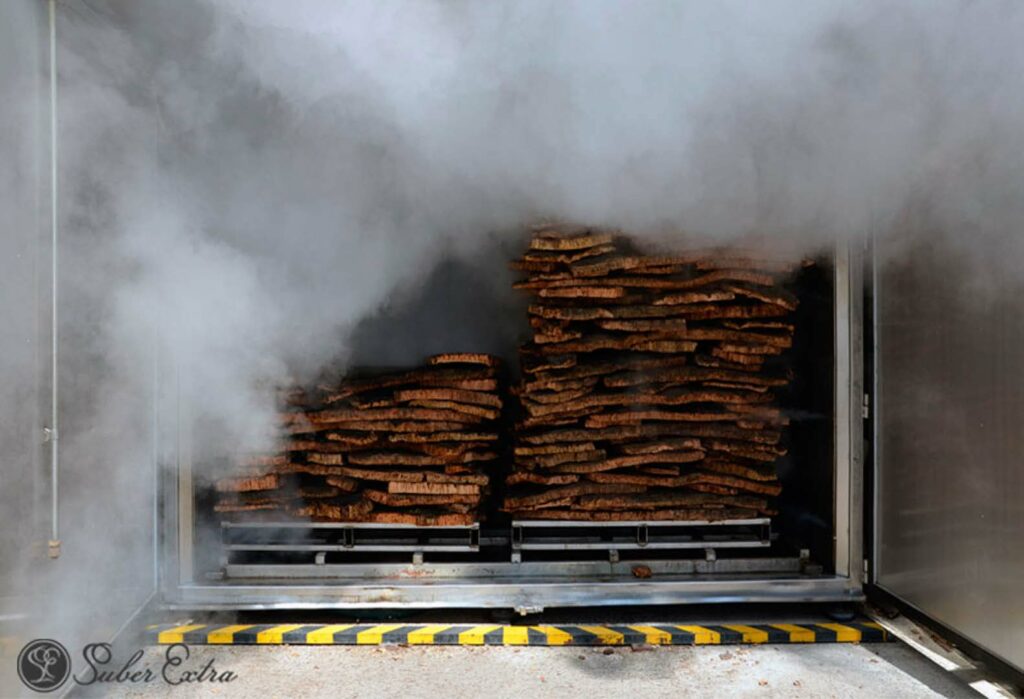
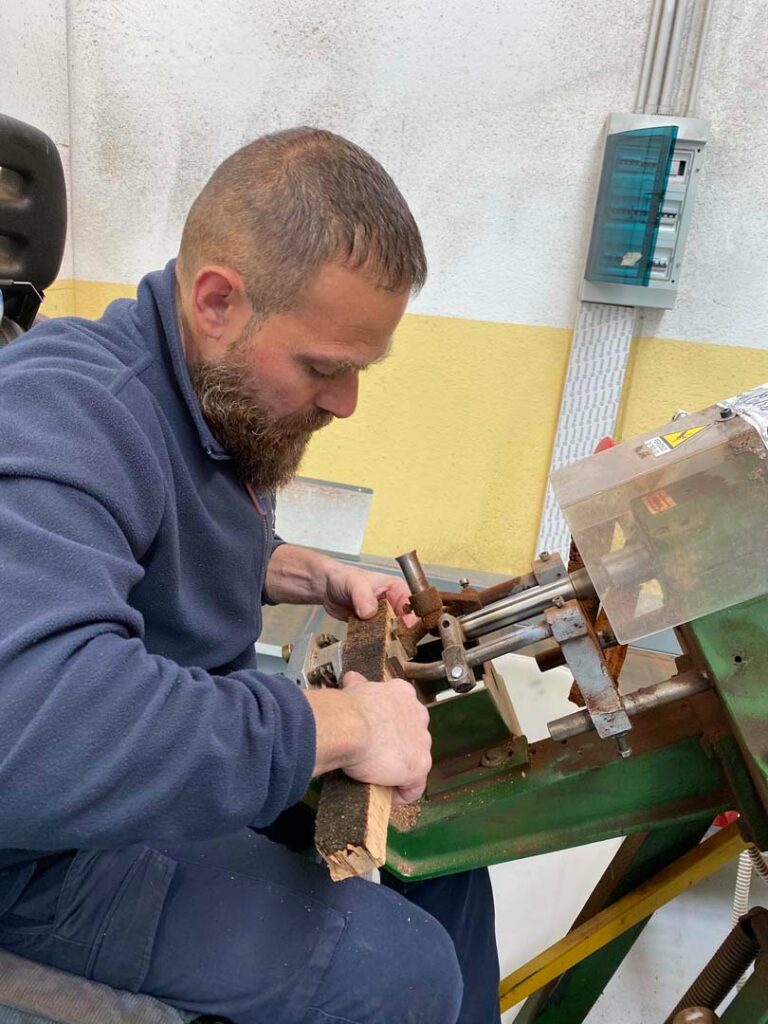
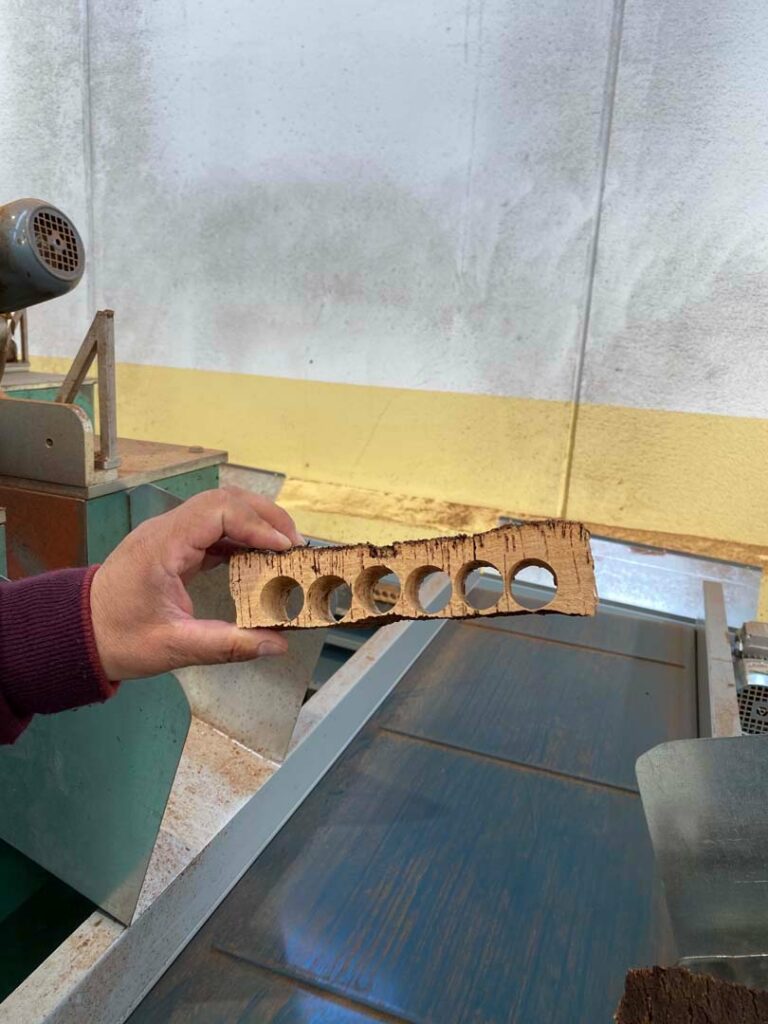
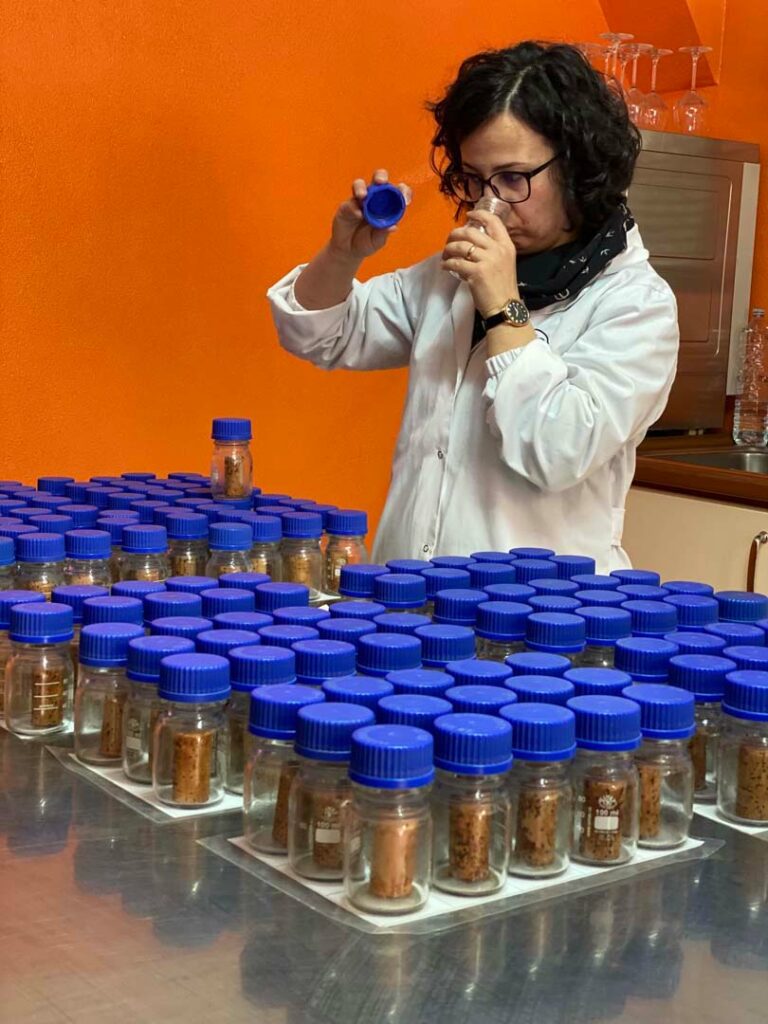
A truly important phase is quality control: samples are taken from every lot and they are subjected to laboratory analysis.
In case of Suber Extra winery the olfactory examination is done in a traditional way: the “noses” of the winery sniff up to 1000 corks a day in search of defects or smells that could be related to the presence of the fungus responsible for the smell of cork.
A step back: Every year 360 million bottles of wine in the world end up in the sink because they smell of cork. The problem is well known: trichloroanisole (TCA), a substance that can be carried by a fungus, Armillaria mellea, present in one-piece corks.
Identifying these odors in advance is equivalent to ensuring a safe cork that will not compromise the wine. Today multinational companies in this field have developed advanced technologies for this process of control and guarantee, but in Sardinian cork producers this still happens mainly thanks to the experience and talent of human “noses”.
If you are interested in this topic I suggest you to listen to my podcast and the interviews with the directors of Vinventions Italia (alternative closures to cork) and Amorim Italia (international innovative company in the field of corks).
Finally, corks are personalized with the client’s logo, applied on the side or on one or both heads of the cork and shipped to store thousands of wines all over Italy just waiting for our corkscrews.
IN ITALIANO
Qual e’ la prima cosa che fate quando volete bere un bicchiere di vino? Ovviamente aprire la bottiglia. Vi siete mai chiesti che cosa c’e’ dietro al tappo che la chiude? Un mondo. Innanzitutto l’annosa diatriba tra chi prende in considerazione chiusure alternative al sughero e chi invece resta fedele alla tradizione.
Come sapete non sono un tecnico enologo, ma sono un’inguaribile curiosa e una giornalista. Sono andata quindi a vedere con i miei occhi come si produce un tappo di sughero artigianale in Sardegna nel cuore della Barbagia. Ho realizzato un breve video reportage che trovate al link qui sotto. Ho imparato moltissimo sul sughero sardo intervistando Franco Moro e suo figlio Pietro alla guida dell’azienda Suber Extra, vi riassumo alcune curiosità e fatti in questo articolo.
Una delle sensazioni positive che mi sono portata a casa dalla visita e’ stata quella di essere testimone di un’economia locale virtuosa: la famiglia Moro estrae il sughero dalle piante centenarie della Barbagia, lo seleziona, lo lavora sul posto (a Ovodda, Nuoro), produce tappi di qualità dando lavoro a molte famiglie, con gli scarti della lavorazione (i trucioli e la segatura) alimenta l’intera azienda con energie alternative (inclusi i pannelli solari installati sullo stabilimento) e spedisce i tappi a molte cantine italiane, ma soprattutto alle cantine della Barbagia, tra cui i grandi produttori di Mamoiada, Orgosolo, Dorgali. Quante regioni vinicole possono vantare un tappo a chilometro zero? Ho trovato questa scelta un ulteriore passo virtuoso verso la tutela del nostro ambiente e verso la tanto sproloquiata sostenibilità: Suber Extra e’ un esempio di sostenibilità ambientale, sociale ed economica.
Ma ora vediamo come nasce il tappo in sughero naturale in un’azienda artigianale sarda.
Una premessa: le principali aree di diffusione della quercia da sughero (tutte localizzate nel mar Mediterraneo occidentale) sono il Portogallo, la Spagna, la Sardegna, la Sicilia, la Maremma grossetana, la Corsica, il sud della Francia e il Nordafrica. Attualmente su circa 36 000 km² di sugherete nel Mediterraneo ne vengono economicamente sfruttate circa 20 000 km² e vi vengono estratte circa 300 000 tonnellate di sughero l’anno, di cui circa 15 000 in Italia (12 000 solo in Sardegna).
L’estrazione del sughero necessita di un’accurata preparazione oltre che di grande pazienza. Per ottenere una produzione abbondante e di buona qualità nel rispetto della loro salute, infatti, le piante devono aver raggiunto almeno i 10-12 anni di età. Se la scorticazione viene effettuata prima del tempo, l’albero deperisce e la sua produttività viene irrimediabilmente compromessa. E’ importante, dunque, che le piante abbiano raggiunto il giusto grado di sviluppo, e solo allora si può procedere alla cosiddetta demaschiatura, vale a dire l’asportazione del sughero maschio, o sugherone, di qualità scadente, facendo particolare attenzione ad incidere la sola parte tuberosa del fusto senza causare lesioni alla pianta. Dopo questa operazione l’albero comincia a produrre il sughero migliore (femmina o gentile) che diviene sempre più spesso ed è pronto per l’estrazione soltanto dopo, almeno, altri nove anni. Una volta effettuata l’asportazione, occorrono altrettanti anni perchè la pianta sia pronta per una nuova estrazione. Si continua, quindi, con gli stessi ritmi per l’intero ciclo vitale del bosco che può essere anche di 100 anni. L’attività di estrazione viene sempre effettuata durante la stagione estiva e coinvolge, di volta in volta, una superficie sempre più ampia del tronco sino a raggiungere i rami.
La materia prima così ottenuta è, dunque, pronta per la lavorazione e la trasformazione in oggetti.
Dopo una lunga lavorazione che parte dalla stagionatura, per far perdere la curvatura alla corteccia, alla bollitura, che completa l’appiattimento e la ammorbidisce, circa il 60% del sughero viene destinato alla fabbricazione del tappo di sughero, circa 15 miliardi di pezzi all’anno in Sardegna, dei quali più o meno la metà in sughero pregiato monopezzo per vini di qualità e l’altra metà in agglomerati per vini di qualità media.
Una fase di vitale importanza e’ il controllo qualità: da ogni lotto vengono prelevati dei campioni che vengono sottoposti alle analisi di laboratorio.
Nel caso dell’azienda Suber Extra l’esame olfattivo avviene in maniera artigianale: i “nasi” dell’azienda annusano fino a 1000 tappi al giorno in cerca di difetti o di odori che possano ricondurre alla presenza del fungo responsabile del sentore di tappo.
Un passo indietro: Ogni anno 360 milioni di bottiglie di vino nel mondo finiscono nel lavandino perché sanno di tappo. Il problema è noto: il tricloroanisolo (TCA), una sostanza che può essere veicolata da un fungo, l’Armillaria mellea, presente nei tappi monoblocco in sughero.
Identificare in anticipo questi odori equivale a garantire un tappo sicuro che non comprometterà il vino. Oggi le aziende multinazionali del settore hanno sviluppato tecnologie avanzate per questo processo di controllo e garanzia, ma nel sugherificio sardo questo avviene ancora principalmente grazie all’esperienza e al talento dei “nasi” umani.
Se sei interessato a questo tema ti consiglio di ascoltare il mio podcast e le interviste ai direttori di Vinventions Italia (chiusure alternative al sughero) e Amorim Italia (azienda internazionale innovativa nel settore dei tappi in sughero).
I tappi infine vengono personalizzati con il logo del cliente, applicato sul fianco o su una o entrambe le teste del tappo e spediti a custodire migliaia di vini in tutta Italia che aspettano solo i nostri cavatappi.
YOUTUBE VIDEO REPORTAGE:

